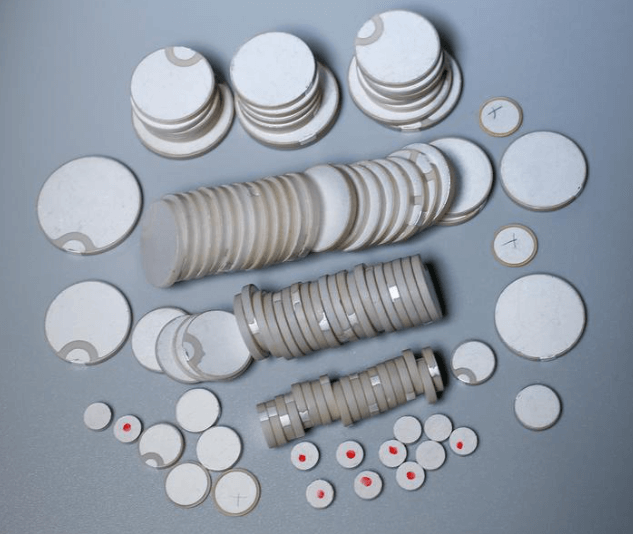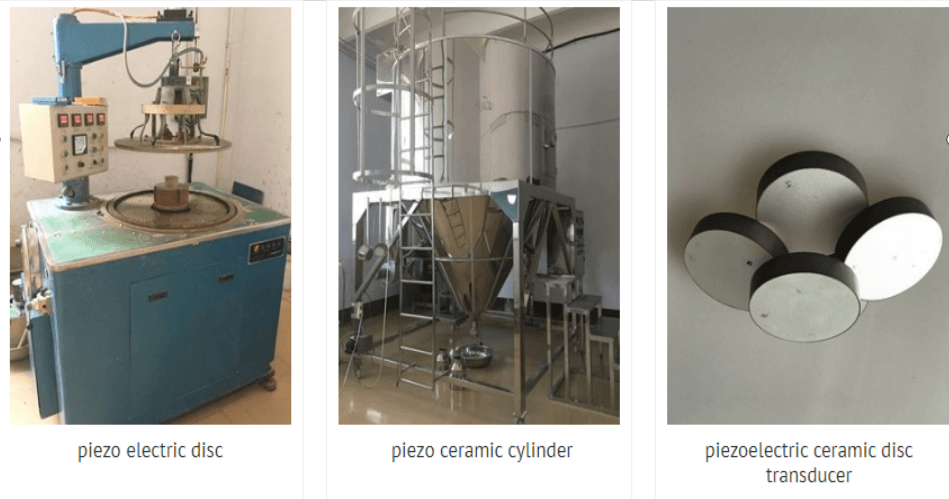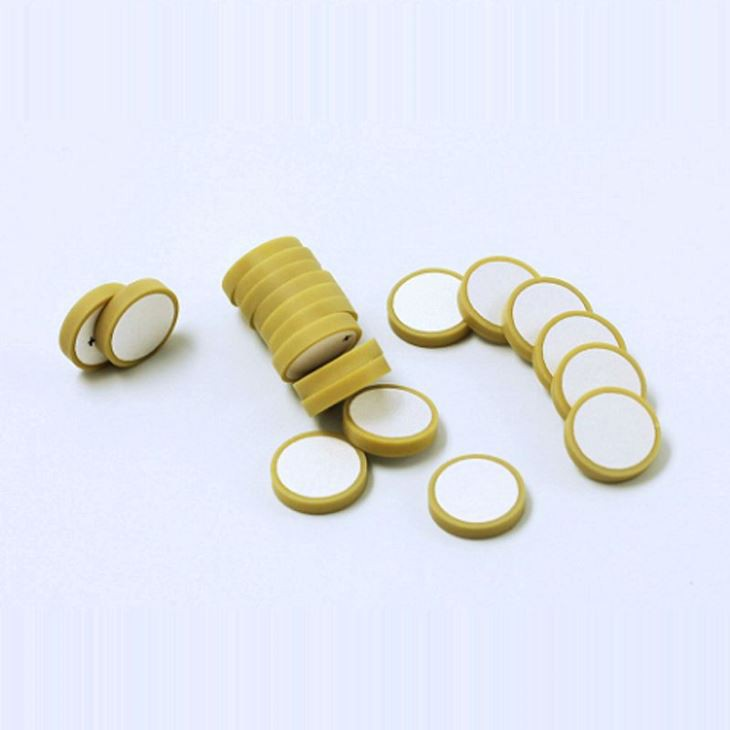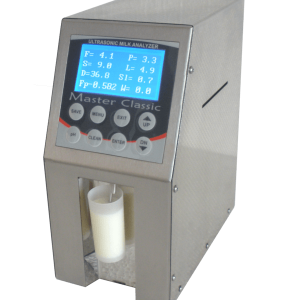Piezoelectric Ceramic Disc Transducer
Piezoelectric ceramics are an information functional ceramic material that can convert mechanical energy and electrical energy into each other - piezoelectric effect. In addition to piezoelectricity, piezoelectric ceramics also have dielectric properties, elasticity, etc. They have been widely used in medical imaging, acoustic sensors , acoustic transducers, ultrasonic motors, etc. Piezoelectric ceramics are made by using their materials to cause relative displacement of positive and negative charge centers under mechanical stress, resulting in polarization and the appearance of opposite sign bound charges on the surfaces of both ends of the material, known as piezoelectric effect. They have sensitive characteristics and are mainly used to manufacture ultrasonic transducers, underwater acoustic transducers, electroacoustic transducers, ceramic filters, ceramic transformers, ceramic frequency discriminators, high-voltage generators, infrared detectors, surface acoustic wave devices, electro-optical devices, ignition devices, and piezoelectric gyroscopes. In addition to being used in high-tech fields, they are mainly used to serve people in daily life and strive to create a better life for them.
FBelec can customize standard specifications of piezoelectric ceramics. milk analyzer ceramic plates, milk analysis using ceramic plates, focusing on applications in different fields such as piezoelectric ceramics and micro piezoelectric ceramics. It is available for retail and wholesale, and can be customized according to customer needs. With 27 years of experience in research and development, production, and manufacturing of ultrasonic devices, FBelec is a Fortune 500 supplier and exports its products to Europe and America.
Ceramic Plates in Milk Analyzers
While piezoelectric ceramics are commonly used in milk analyzers due to their ability to convert mechanical energy into electrical energy and vice versa, there are also other types of ceramics that can be utilized in these devices. Ceramic plates are one such example.
How Ceramic Plates are Used in Milk Analyzers
Ceramic plates can be used in various ways within piezo ceramic milk analyzer, including:
Sensor Components: They can be integrated into sensors that measure specific properties of milk, such as its density or conductivity. For example, a ceramic plate might be used as part of a capacitive sensor to measure the dielectric properties of milk, which are related to its fat content.
Structural Elements: Ceramic plates can provide structural support for other components within the analyzer, ensuring its durability and reliability.
Heat Exchange: In some cases, ceramic plates can be used to facilitate heat exchange, which is important for maintaining consistent operating conditions within the analyzer.
Advantages of Using Ceramic Plates
Ceramic plates can be used in various ways within piezo ceramic milk analyzer, including:
Durability: Ceramics are known for their hardness and resistance to wear and tear, making them suitable for applications where the analyzer is subjected to harsh conditions.
Chemical Resistance: Many ceramics are resistant to corrosion and chemical attack, which is important for handling milk and other food products.
Thermal Stability: Ceramics can maintain their properties over a wide range of temperatures, making them suitable for use in various environments.
Biocompatibility: Certain ceramics are biocompatible, meaning they are safe for use in contact with food products.
While piezoelectric ceramics are a popular choice for milk analyzers due to their unique properties, ceramic plates offer a versatile and durable alternative that can be used in various components of these devices.
Would you like to know more about specific types of ceramic plates used in milk analyzers or their applications?
Ceramic Plates: A Hidden Gem in Milk Analyzers
Milk analysis, a crucial aspect of the dairy industry, has seen significant advancements in recent years. One of the key components that has played a vital role in these advancements is the use of ceramic plates. While often overshadowed by other technologies, ceramic plates offer unique advantages and capabilities that make them an invaluable asset in milk analyzers.
Key Applications of Ceramic Plates in Milk Analyzers
Sensor Components: Ceramic plates can be integrated into sensors that measure specific properties of milk, such as density, conductivity, and viscosity. Their precision and durability make them ideal for these critical measurements.
Structural Support: Ceramic plates can provide structural support for other components within the analyzer, ensuring its stability and longevity. Their strength and resistance to wear and tear make them reliable choices for this purpose.
Heat Exchange: In certain milk analyzers, ceramic plates can be used to facilitate heat exchange, ensuring optimal operating conditions. Their thermal conductivity and resistance to high temperatures make them well-suited for this application.
Advantages of Using Ceramic Plates
Durability: Ceramic plates are known for their exceptional durability, making them resistant to wear and tear, even in harsh environments.
Chemical Resistance: Many ceramics are resistant to corrosion and chemical attack, ensuring their longevity when exposed to milk and other food products.
Thermal Stability: Ceramic plates can maintain their properties over a wide range of temperatures, making them suitable for various operating conditions.
Precision: When used in sensors, ceramic plates can provide highly accurate measurements, essential for reliable milk analysis.
Ceramic plates have emerged as a valuable component in milk analyzers, offering a combination of durability, precision, and versatility. Their applications extend from sensor components to structural support and heat exchange, contributing significantly to the accuracy and efficiency of milk analysis. As the dairy industry continues to evolve, ceramic plates are likely to play an even more prominent role in shaping the future of milk analysis technology.

- Home
- Product
- Acoustic Component
- Security & Alarm
- Sensor
- Piezo Ceramic
- Connector & Cable
- Fuse & Circuit Breaker
- Switch & Indicator
- Battery Holder & Connectors
- Motors & Fans & Heat Sink
- Power Supply
- Relay & Socket
- Ultrasonic Machine & Part
- LED & LED Display
- Wifi & Antennas
- Inductor & Choke
- Electricians Tools
- Electronic Beauty Instrument
- IC & Semiconductors
- Mould & Plastic Enclosure
- Smart Home
- Arduino & Robot
- Solution
- About
- News
- Contact
- Acoustic Component
- Piezo Ceramic Element
- Piezo Buzzer
- Magnetic Buzzer
- SMD Buzzer
- Piezo Transducer
- Magnetic Transducer
- Mechanical Buzzer
- Electret Condenser Microphone
- Loud Speaker
- Micro Speaker
- Mylar Speaker
- Ultrasonic Speaker
- Headphones & Earbuds & Headsets
- Bluetooth speaker
- Ceiling Speaker
- Garden Speaker
- Party Speaker
- Sound Button
- Sound Module
- Receiver
- Security & Alarm
- Sensor
- Piezo Ceramic
- Connector & Cable
- USB & Type C & HDMI Connector
- FFC / FPC / Wafer connector
- Card Socket
- Water Proof Connector
- Anderson Battery Connector
- Wire Harness
- Micro D Connector
- Coaxial Connectors
- New Energy Vehicle Charge Accessory
- Magnetic Power Connector
- Compact Splicing Connector
- Screw Nut & Spacer
- USB HUB & Type C Adapter Converter
- Splitter & DP HDMI
- Heat Shrink Tube
- USB & Type C & HDMI cable
- Pin Header Connector
- Automotive Connectors
- Ethernet Connectors
- More Products
- Fuse & Circuit Breaker
- Switch & Indicator
- Battery Holder & Connectors
- Motors & Fans & Heat Sink
- Power Supply
- Relay & Socket
- Ultrasonic Machine & Part
- LED & LED Display
- Wifi & Antennas
- Inductor & Choke
- Electricians Tools
- Electronic Beauty Instrument
- IC & Semiconductors
- Mould & Plastic Enclosure
- Smart Home
- Arduino & Robot





